 |
 |
 |
| |
Mortality 4.5 times higher in Canadian
women with HIV than in general population
|
| |
| |
22nd International AIDS Conference, Amsterdam, Netherlands, July 23-27, 2018
Mark Mascolini
Compared with women in the general population, Canadian women in care for HIV had a 4.5 times higher risk of age-standardized death from any cause [1]. Three independent predictors of death emerged in women with HIV: older age, hazardous alcohol use, and current tobacco use. HIV-related factors did not predict death.
Life expectancy is improving in people with HIV, but disparities persist between certain groups. A recent 9997-person Canadian analysis found shorter life expectancy in women than in men [2]. Researchers at Simon Fraser University and collaborators at other centers conducted a new study to determine mortality in HIV-positive women and to compare their death rate with that in the general population.
The analysis involved women in the Canadian HIV Women's Sexual and Reproductive Health Cohort Study (CHIWOS), the largest longitudinal community-based study of HIV-positive Canadian women 16 years or older living in British Columbia, Ontario, or Quebec. Enrollment began in 2013-2015 and continued in two later waves. The investigators determined death, cause of death, time at risk of death, loss to follow-up, and age-standardized mortality ratio compared with the 2011 Canadian reference population of women 15 or older.
Among 1422 HIV-positive women included, 63 (4.4%) identified as trans. Median age stood at 42.5 (interquartile range 35 to 50). While 41.1% of women were white, 29.4% were black, 22.4% indigenous, and 7.2% other ethnicities. Most women, 70%, had a personal yearly income below $20,000, and 45% used illicit drugs currently or in the past. Almost all women, 97.4%, received HIV care in the past year, 82.6% currently took antiretroviral therapy, and 77.1% had a viral load below 50 copies.
During follow-up 54 of 1422 women died (3.8%) for a crude mortality of 11.8 per 1000 person-years. Age-standardized mortality in women with HIV stood at 12.3 per 1000 person-years, compared with 2.71 per 1000 person-years in the general population. Those numbers yielded an age-standardized mortality ratio of 4.54 (95% confidence interval [CI] 3.33 to 5.76), meaning women with HIV had more than a 4.5 times higher death rate than similarly aged women in the general population.
Cause of death could not be determined in 67% of women with HIV. Known causes were comorbidities including cancer and cardiovascular disease (15% of women), drug or alcohol use (11%), and HIV-related opportunistic infections (6%).
A proportional hazards model with loss to follow-up as a competing risk identified 3 independent predictors of death in women with HIV at the following adjusted hazard ratios (aHR) and 95% CI:
-- Older age: aHR 1.06 per year (1.03 to 1.09)
-- Heavy alcohol drinking (vs nonbinge drinking): aHR 4.62 (1.66 to 12.82)
-- Current tobacco use (vs never): aHR 3.93 (1.45 to 10.65)
There were trends toward an association between depressive symptoms and mortality (aHR 1.95, 95% CI 0.97 to 3.92) and former smoking and mortality (aHR 3.26, 95% CI 0.97 to 10.94).
The researchers labeled mortality in this cohort of women with HIV "alarmingly high." They argued that good HIV clinical care is necessary but not sufficient to prevent premature mortality. Women also need "women-centered HIV community outreach, social care services, and policy changes that address social disparities and mental health needs, and integrate harm reduction services, inclusive of tobacco and hazardous alcohol use."
References
1. Kaida A, Gormley R, Webster K, et al. High mortality among women living with HIV enrolled in Canada's largest community-based cohort study. AIDS 2018: 22nd International AIDS Conference, Amsterdam, Netherlands, July 23-27, 2018. Abstract TUPDC0102. https://programme.aids2018.org//PAGMaterial/eposters/11354.pdf
2. Patterson S, Cescon A, Samji H, et al. Life expectancy of HIV-positive individuals on combination antiretroviral therapy in Canada. BMC Infectious Dis. 2015;15:274.
---------------------------

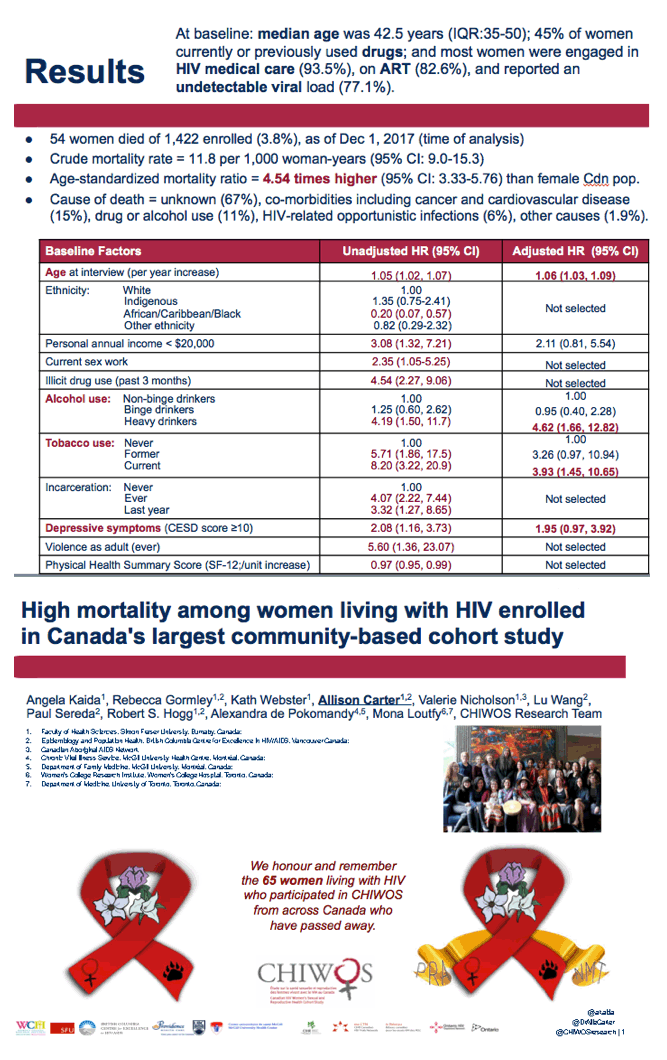

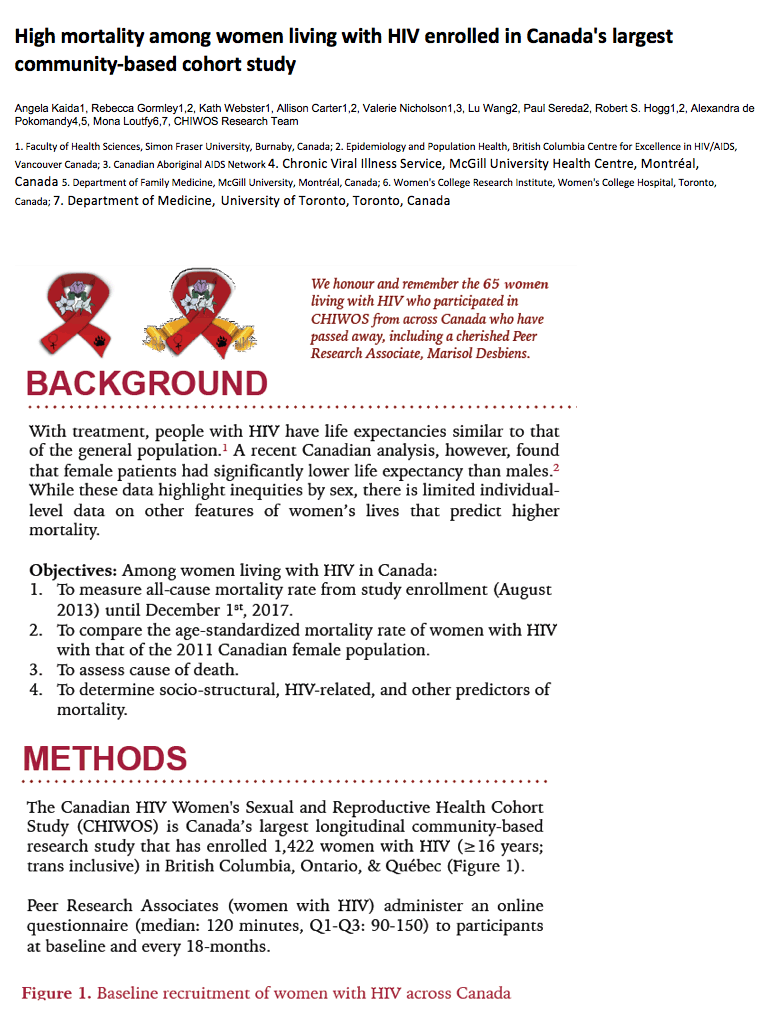
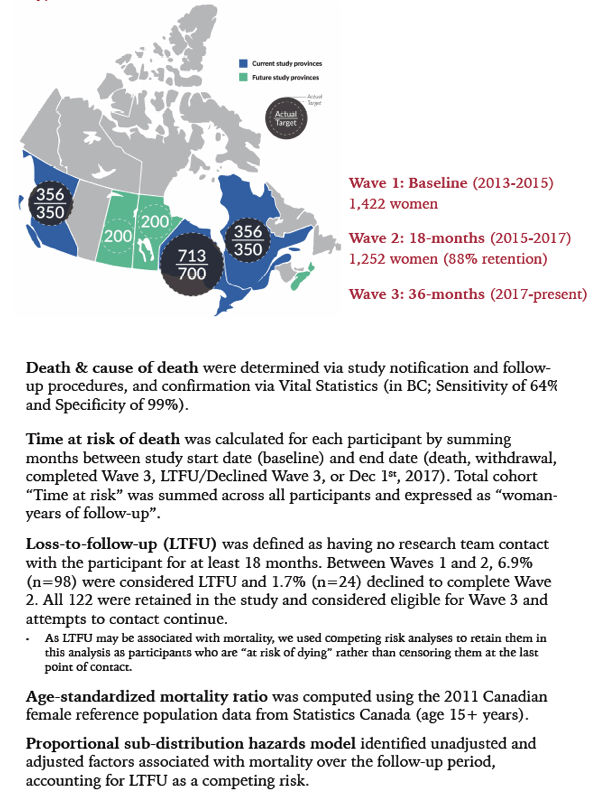

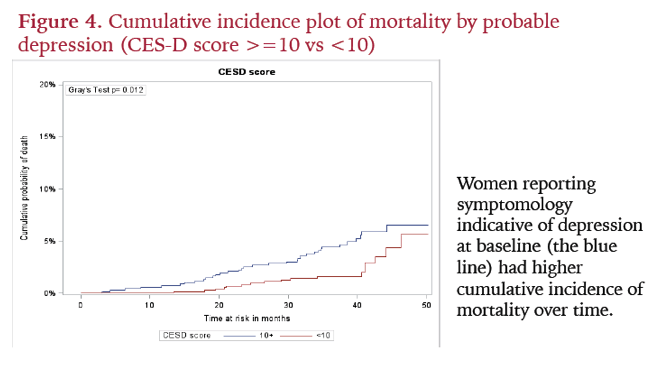
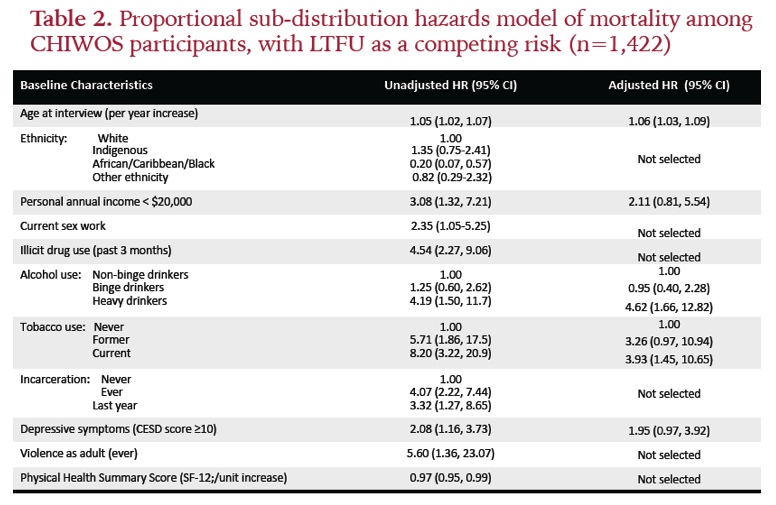
|
| |
|
 |
 |
|
|